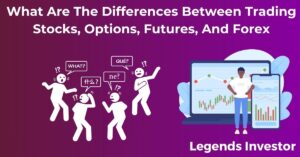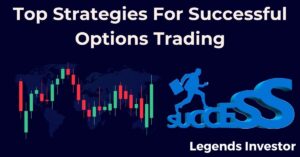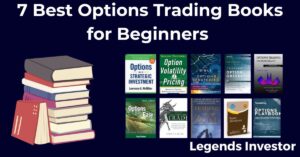Introduction to Trading: Journey Through Time and Markets
Trading has been an integral part of human civilization, evolving from ancient barter systems to sophisticated electronic platforms. This article delves into the definition and evolution of trading, its significance in modern economies, and the various facets that make up the trading world today.
Definition of Trading and Its Evolution
Trading, in its simplest form, is the exchange of goods or services between parties. This concept has evolved dramatically over centuries, from simple bartering in ancient times to the complex financial markets we have today.
Pictorial View of Trading from Ancient Barter Systems to Modern Electronic Platforms
- Ancient Barter Systems: The earliest form of trading involved the direct exchange of goods and services. For example, a farmer might trade grain for a blacksmith’s tools.
- Introduction of Currency: The invention of money simplified trade by providing a common medium of exchange, facilitating transactions that were not immediately reciprocal.
- Stock Markets: The establishment of stock exchanges, such as the Amsterdam Stock Exchange in 1602, marked the beginning of organized financial trading.
- Electronic Trading: The late 20th century saw the advent of electronic trading platforms, allowing for faster, more efficient trading across global markets.
- Modern Digital Platforms: Today, trading can be done through various online platforms and mobile apps, making it accessible to anyone with an internet connection.
The Significance of Trading in Modern Economies
Trading is crucial for economic growth and development. It enables the flow of capital and goods, creates jobs, and drives innovation. Financial markets, in particular, play a key role in allocating resources efficiently, providing liquidity, and facilitating risk management.
Demystifying Trading: More Than Just Stocks and Bonds
Trading encompasses a wide range of financial instruments beyond just stocks and bonds. Understanding these instruments and their unique characteristics is essential for anyone interested in trading.
Various Financial Instruments
- Stocks: Represent ownership in a company. Trading stocks involves buying and selling shares to profit from price movements.
- Bonds: Debt securities issued by corporations or governments. Traders buy and sell bonds to profit from changes in interest rates or credit ratings.
- Commodities: Physical goods like gold, oil, and agricultural products. Commodity trading involves speculating on the future prices of these goods.
- Forex: Foreign exchange trading involves buying and selling currencies to profit from changes in exchange rates.
- Cryptocurrencies: Digital currencies like Bitcoin and Ethereum. Crypto trading is highly volatile and speculative.
Differences Between Investing and Trading
- Investing: Typically involves a long-term approach, focusing on the growth potential of assets over time.
- Trading: Usually short-term, aiming to capitalize on price fluctuations. Traders often make multiple transactions within a short period.
Risk and Reward Profiles of Different Trading Instruments
Each trading instrument carries its own risk and reward profile. For instance, stocks can offer high returns but are also susceptible to market volatility. Bonds are generally considered safer but provide lower returns. Commodities and cryptocurrencies are highly volatile, offering substantial profit potential but also significant risk.
The Anatomy of a Trade: Understanding the Basics
What Constitutes a Trade: The Bid, Ask, and Spread
- Bid Price: The highest price a buyer is willing to pay for an asset.
- Ask Price: The lowest price a seller is willing to accept.
- Spread: The difference between the bid and ask prices, representing the transaction cost.
The Role of Brokers and Exchanges
- Brokers: Act as intermediaries between buyers and sellers, executing trades on behalf of clients.
- Exchanges: Platforms where securities are traded. Major exchanges include the NYSE, NASDAQ, and the London Stock Exchange.
Different Types of Orders: Market, Limit, Stop-Loss, etc.
- Market Orders: Execute immediately at the current market price.
- Limit Orders: Execute at a specified price or better.
- Stop-Loss Orders: Sell an asset when it reaches a certain price to limit potential losses.
Psychology of Trading: Mind Over Market
Emotional Intelligence and Discipline in Trading
Successful trading requires emotional intelligence and discipline. Traders must manage their emotions and stick to their trading plans, even in the face of market volatility.
Common Psychological Traps: Fear, Greed, and Herd Mentality
- Fear: Can lead to premature selling or avoiding trades.
- Greed: Can result in overtrading or holding onto losing positions too long.
- Herd Mentality: Following the crowd without independent analysis can lead to poor trading decisions.
Strategies to Cultivate a Trader’s Mindset
- Education: Continuous learning about markets and trading strategies.
- Practice: Using demo accounts to hone skills without financial risk.
- Mindfulness: Techniques such as meditation to maintain focus and reduce stress.
Decoding Trading Strategies: Path to Profit or Peril?
Overview of Popular Trading Strategies
- Day Trading: Buying and selling within the same trading day.
- Swing Trading: Holding positions for several days to weeks to profit from short-term price movements.
- Scalping: Making numerous small trades to profit from minor price changes.
Importance of Having a Trading Plan
A trading plan outlines your strategy, risk management, and goals. It helps you stay disciplined and make informed decisions.
How to Evaluate and Manage Trading Risks
- Risk Assessment: Understanding the potential losses in any trade.
- Diversification: Spreading investments across different assets to reduce risk.
- Position Sizing: Determining the amount to invest in each trade based on your risk tolerance.
The Trader’s Toolkit: Navigating Technicals and Fundamentals
Fundamental Analysis vs. Technical Analysis
- Fundamental Analysis: Evaluating a company’s financial health, industry conditions, and economic factors.
- Technical Analysis: Analyzing price charts and patterns to predict future price movements.
Essential Trading Tools and Indicators
- Charts: Visual representations of price movements over time.
- Indicators: Tools like moving averages, RSI, and MACD that help identify trends and potential entry/exit points.
Importance of Continuous Learning and Adaptation
Markets are constantly evolving. Staying informed about new developments and adapting your strategies is crucial for long-term success.
The Digital Trading Arena: Platforms, Apps, and Automation
The Rise of Online Trading Platforms and Mobile Apps
Online trading platforms and mobile apps have revolutionized trading by providing easy access to markets, real-time data, and advanced trading tools.
Introduction to Algorithmic Trading and Its Impact on the Markets
Algorithmic trading involves using computer programs to execute trades based on predefined criteria. It increases efficiency and reduces human error but also introduces new challenges like flash crashes.
How to Choose the Right Trading Platform for Your Needs
Consider factors like user interface, fees, available tools, and customer support when selecting a trading platform.
Navigating Legal Landscapes: Trading Within the Rules
Understanding Regulatory Bodies and Their Role in Trading
- SEC (Securities and Exchange Commission): Regulates securities markets in the U.S.
- CFTC (Commodity Futures Trading Commission): Regulates commodity futures and options markets in the U.S.
Legal Considerations and Trader Responsibilities
Traders must comply with regulations to avoid legal issues. This includes reporting requirements and avoiding illegal activities like insider trading.
Avoiding Pitfalls: Insider Trading and Market Manipulation
Insider trading involves using non-public information for trading advantage, while market manipulation includes activities that distort market prices. Both are illegal and carry severe penalties.
Kickstarting Your Trading Journey: First Steps and Resources
How to Get Started with Trading: Education and Practice Accounts
Start by educating yourself about markets and trading strategies. Practice accounts offered by many brokers allow you to trade with virtual money to gain experience without financial risk.
Resources for Credible Trading Information and Education
- Books: There are numerous books on trading strategies and market analysis.
- Online Courses: Websites like Coursera, Udemy, and Khan Academy offer trading courses.
- Webinars and Seminars: Many financial institutions and experts offer live sessions on various trading topics.
Building a Support Network: Communities and Mentorship
Joining trading communities and seeking mentorship from experienced traders can provide valuable insights and support. Online forums, social media groups, and local trading clubs are great places to start.
In conclusion, trading is a dynamic and complex activity that requires knowledge, discipline, and continuous learning. By understanding the basics, developing a solid trading plan, and utilizing the right tools and resources, you can navigate the trading world more confidently and increase your chances of success.



